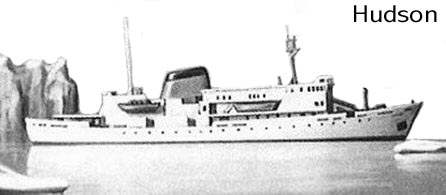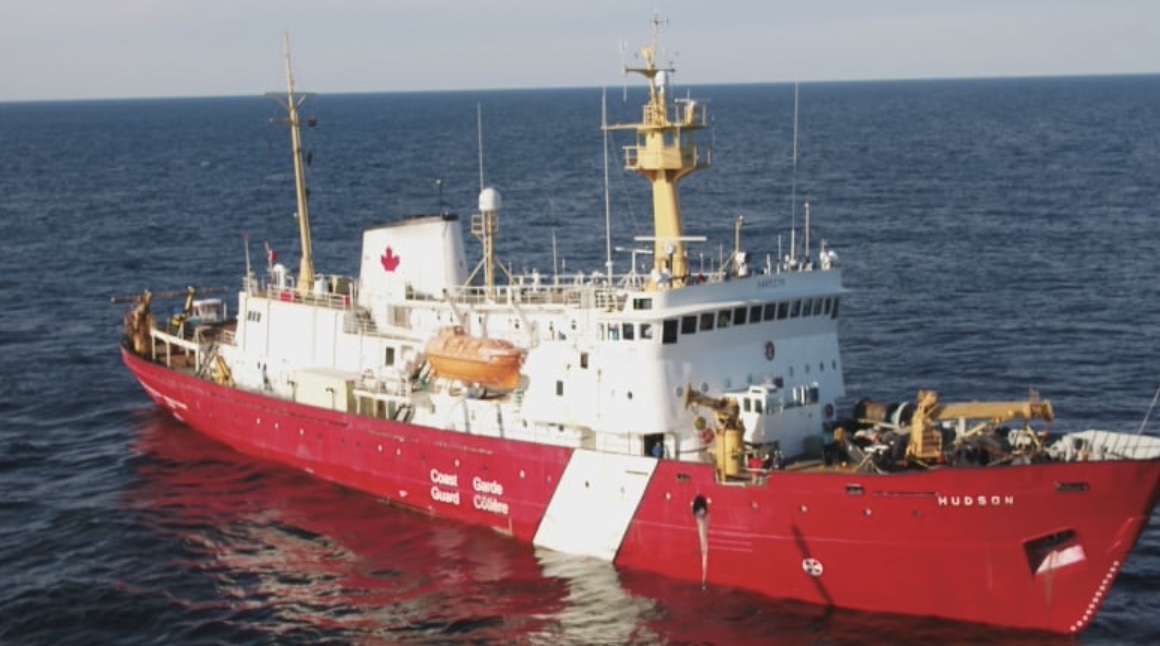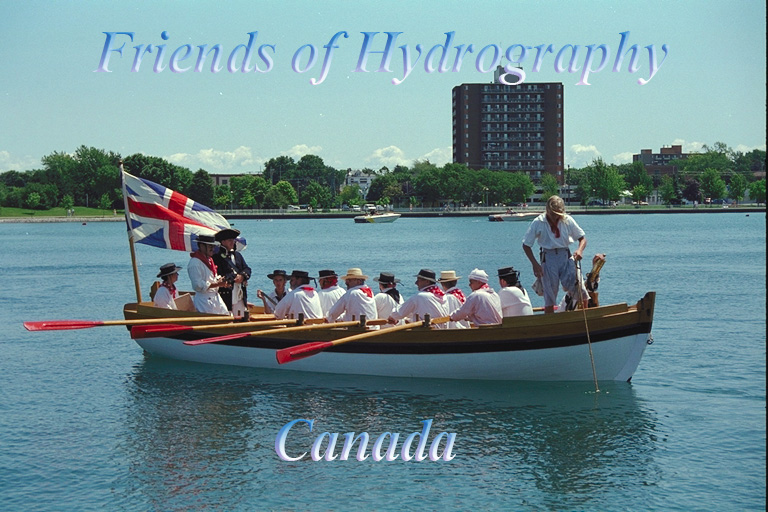Hudson


The Hudson was the first Canadian ship specifically designed for hydrographic and oceanographic research. She is a twin screw, diesel electric vessel, 296 feet in length with a displacement of 4,800 tons. Hudson cruises at 14 knots with a maximum speed of 16.5 knots and a cruising range of 15,000 miles. She is ice strengthened and sufficiently powerful to permit effective and safe movement in ice infested waters. The ships compliment is up to 20 officers, 44 crew and 28 scientific personnel. She has served in many areas around the world including a transit of the Northwest Passage. A very significant voyage around the Americas is well chronicled in a book entitled 'Voyage to the Edge of the World" by Alan Edmonds (1973, McClelland and Stewart)
|
Year |
HIC |
Captain |
Location |
Survey Type |
1964 |
L.P. Murdock |
Tail of the Bank |
Off-Shore |
|
CBC News - Jan 20, 2022 - Paul Withers (https://www.cbc.ca/amp/1.6321035)
Storied Canadian science vessel CCGS Hudson has reached the end of the line
It's the end of the line for one of Canada's most storied ships.
The 59-year old research vessel CCGS Hudson is set to be decommissioned, according to a statement from the Canadian Coast Guard released Wednesday.
The release stated that the Coast Guard had deemed the ship "beyond economical repair" following a catastrophic mechanical failure last fall.
The 90-metre long oceanographic science ship has been tied up in St. John's since Nov. 5, when a starboard propulsion motor failed as it came into port.
Too costly, time consuming to repair
The Coast Guard has determined repairs would be too costly and too time consuming.
Even before the motor failure, it said Hudson was going to be out of service for the first six months of 2022 for other maintenance to meet safety standards.
"We would end up having to take that large electrical motor out of the ship and to rewind it in a lab setting. And that would take the ship out of service all summer as well. So basically, we'd be removing the ship for the next two years out of service to carry out work," said Gary Ivany, assistant commissioner Atlantic region.
"To get the Hudson back in the water in a timely manner, in a reliable manner, it wouldn't happen."
Crew members were told Wednesday.
In the coming weeks, Hudson will return to its base at the Bedford Institute of Oceanography in Halifax.
Hudson replacement pushed back another year
In announcing the decommissioning Wednesday the Coast Guard also revealed that delivery of Hudson's replacement from the Seaspan Shipyard in Vancouver has been pushed back by another year to 2025.
The Government of Canada Shipbuilding Strategy website still estimates delivery in 2024.
Since 2017, the Department of Fisheries and Oceans has spent over $25 million on "life extension" refits for the Hudson in an effort to keep the workhorse at sea. It has been collecting scientific data on the east coast for decades.
Why CCGS Hudson matters
The programs that benefited from those trips include the Atlantic Zone Monitoring Program, which gathers data used to track changing ocean climate — information that affects people and marine species.
To carry out that science, DFO is now looking at a variety of solutions: using remote sensor technology like autonomous ocean gliders, reassigning other Coast Guard ships, and leases and charters of private vessels.
"We're working hard to be able to to make sure that we have either a boat or a series of alternative boats available to be able to deliver on those missions," said David Morin, director general of strategic and regulatory science for DFO.
Ship had "unheard of" longevity
Hudson may have been limping at the end but its longevity was remarkable, said Mac Mackay, who has written extensively on east coast shipping news in his Shipfax Blog.
"It's virtually unheard of that a ship in frontline service would last this long. Most ships are built to last 25 or 30 years, government-built ships a little bit longer because they're so well-maintained," said Mackay.
"To last this long was really quite incredible,"
Hudson is considered a storied ship for a reason.
In 1970 it was the first vessel to circumnavigate North and South America in a single voyage.
"Canada was able to do science with that ship that nobody else could," said Mackay. "And because it's a big oceangoing ship that could stand up to any kind of weather conditions, including ice … you wanted to offer it. So we were able to do stuff that we'd never been able to do before."
One more mission: get home to Halifax
Although the starboard electrical propulsion motor failed, there are two on board — one for each propeller .
The ship still has four main diesel engines that are fully functioning.
So the Hudson will return to Halifax under its own power - on one propeller - where the Coast Guard intends to celebrate Hudson's accomplishments rather than its recent equipment failures.
This year the Canadian Coast Guard will observe its 60th anniversary — just one year older than Hudson.
"It's not lost on us, the ship that's been in the fleet in Canada, serving Canadians proudly," said Ivany.
"We want to do that justice as mariners."

